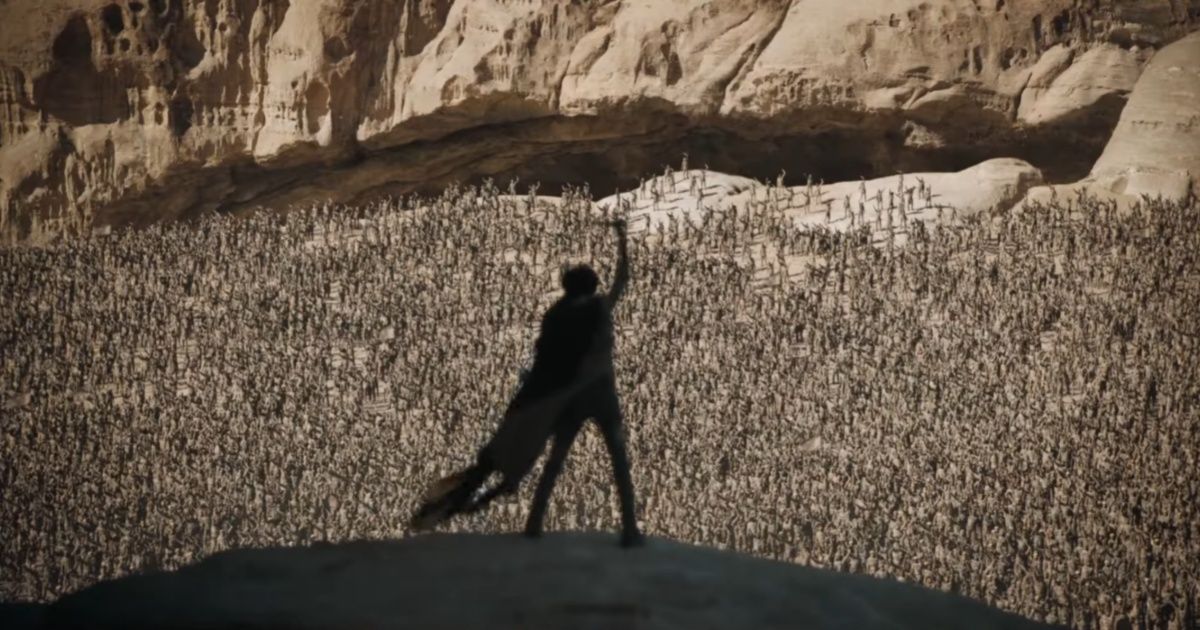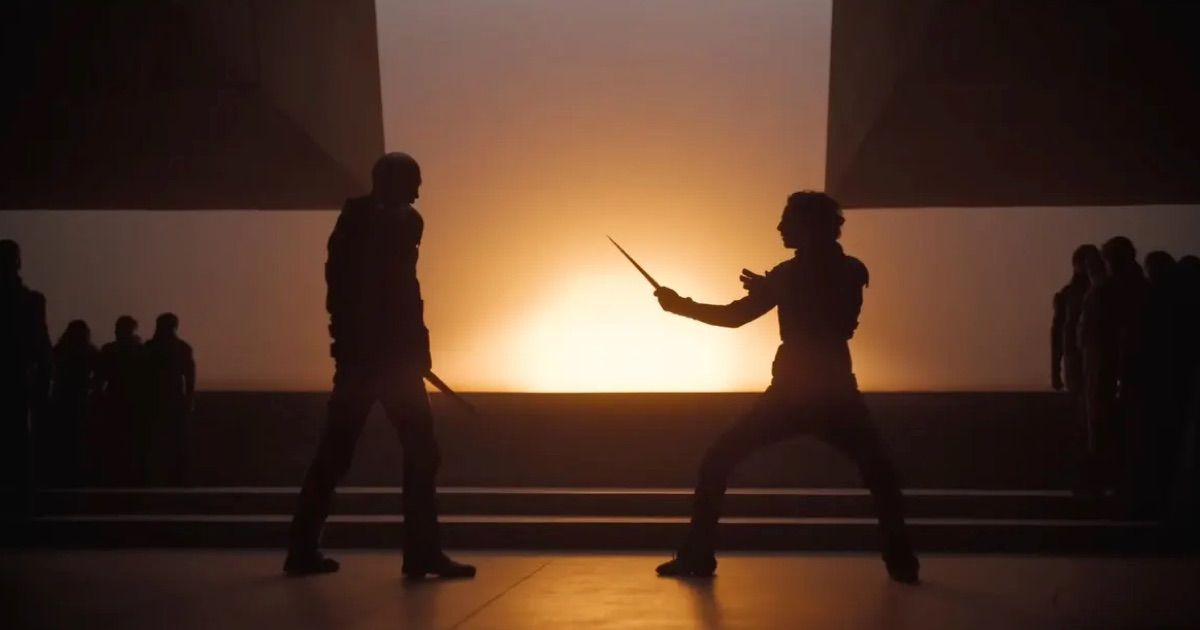With the upcoming release of Denis Villeneuve’s Dune: Part Two this fall, there has been a lot of talk about the Dune franchise, its history and its potential future in the grand scale of the Hollywood film landscape. Dune is a long-standing classic of modern fiction, and it has been adapted to screen on several occasions.
This new iteration, which began with 2021’s Dune: Part One, has really leveled up the franchise in terms of its accessibility to general audiences. The 1984 film directed by David Lynch is a cult classic, but it has not garnered the same kind of widespread attention and praise as the new films.
A large part of why the new Dune films have gotten so much attention is because of how franchise-oriented Hollywood has become. With that, the series has earned a lot of comparisons to other iconic series, in particular Star Wars and The Lord of the Rings. With the release of Part One only a couple of years ago and Part Two coming soon, many have claimed that Dune will be this generation’s equivalent to franchises like Star Wars and The Lord of the Rings. In some ways, that is certainly true, however, it’s not entirely. Here’s how Dune compares to Star Wars and The Lord of the Rings, and how the series has managed to hold its own ground in the ever-intensifying franchise wars.
Story and Lore
Looking at the worlds of these three franchises, Dune exists almost perfectly at the intersection between Star Wars and The Lord of the Rings. It incorporates many similar science-fiction fantasy elements seen in Star Wars, as it is an intergalactic franchise that explores different worlds, cultures, and peoples. Meanwhile, it also embraces the same kind of high-fantasy storytelling that makes The Lord of the Rings so popular.
However, the overall aesthetic and tone of Dune is much more akin to the epic journeys of J.R.R. Tolkien’s Middle-Earth than it is to the space adventures of George Lucas’s galaxy far, far away.
One element that does run throughout all three franchises, however, is their intense dedication to lore and world-building. Star Wars, The Lord of the Rings, and Dune have some of the deepest backstories and lore of any fictional stories in existence. For fans of any of these series, weeks on end could be spent researching and reading about the various legends, worlds, heroes, and villains of all three of these franchises.
While the lore of Star Wars has been built out across a number of mediums ranging from films, to books, TV series, comics, video games, and more, the lore of both The Lord of the Rings and Dune has been established primarily through literature. Both Tolkien and Dune’s author Frank Herbert published several books within their worlds over the years, and their works have been continued posthumously by their sons and other authors. While the world of Tolkien exists in about a dozen books (depending on how you look at it), Herbert’s Dune series, however, is about twice that with over 20 narrative books that have been published.
Origins and Influence
Star Wars, The Lord of the Rings and Dune are connected even more deeply than that, though. Looking beyond their general approaches to story and lore, the three franchises exist in a fairly connected manner in the real world. They were each published and created sequentially and in response to one another. The Lord of the Rings was of the bunch to be published.
While Tolkien first published The Hobbit in the 1930s, it was with the publication of The Lord of the Rings in the ‘50s that the widespread storytelling of Middle-Earth really became apparent. It was some of the most extensive world-building that had ever been done in modern fiction, and it was an inspiration for Herbert when he was writing Dune. The first Dune novel was published in 1965, about a decade after The Lord of the Rings, with Star Wars following another decade later with its first film in 1977.
While Herbert didn’t talk about Lord of the Rings all that explicitly in interviews, the influence of and inspiration from Tolkien’s work are clear to see in Herbert’s writing, which actively builds upon and subverts the tropes that were explored in The Lord of the Rings. This subversion, through the not-so-optimistic depictions of humanity and Messianic religion in Dune, can be assumed as the cause for Tolkien’s distaste for Herbert’s work.
In a letter Tolkien wrote in response to a fan, the Lord of the Rings author stated that “It is impossible for an author still writing to be fair to another author working along the same lines. At least I find it so. In fact, I dislike Dune with some intensity, and in that unfortunate case it is much the best and fairest to another author to keep silent and refuse to comment.”
While The Lord of the Rings had an influence on Herbert’s Dune, whether directly or indirectly, the influence that Dune in turn had on Star Wars is much more clearly seen. There are many elements of Dune that were lifted directly from the novel, adjusted slightly, and then inserted into Star Wars. These elements vary from the desert planet of Tatooine / Arrakis and the evil Empire / Imperium at the center of the action, to specific story revelations and developments that we won’t spoil ahead of Dune: Part Two.
Interestingly, as time has gone on and Dune, Star Wars, and The Lord of the Rings, have continued to expand, the three franchises have begun to actively inspire one other. Villeneuve has commented on the inspiration he has taken from Star Wars and The Lord of the Rings when crafting his new Dune films, meanwhile, Amazon’s The Lord of the Rings: The Rings of Power and the various new Star Wars films and series have also clearly been influenced by each another and Villeneuve’s take on Dune.
Dune Stands on Its Own
While Dune does have a lot of similarities to Star Wars and The Lord of the Rings, both in terms of its original works and the new films, it’s also important to recognize how distinct Herbert’s series is from both of those other franchises. Most notably, Dune is a much more adult and sophisticated franchise on the whole.
While The Lord of the Rings and Star Wars have both told more mature stories, specifically through the likes The Children of Húrin and Andor, they are not as deeply rooted in those kinds of stories as Dune is. Star Wars and The Lord of the Rings are much lighter and generally more accessible than Dune, which is an immensely dense book to read with a lot of grim and complicated thematic material.
This contrast in tone has allowed both Star Wars and The Lord of the Rings to excel with both younger and older audiences alike. Most Star Wars and Lord of the Rings stories exist as some degree of child-friendly, both in terms of intensity and complexity, but Dune doesn’t even bother to try. This is a big part of why the audience for Dune over the years has been so much smaller than these other two series.
It’s not the type of story that the entire family makes a night out of going to see in a theater. In that sense, Dune has more in common with a series like Game of Thrones than it does with The Lord of the Rings. However, that is one of the biggest strengths and differentiating factors of Dune. The audience that Dune does attract is very passionate and dedicated to the material, which is why it has consistently managed to still find success, even if it’s not quite to the levels of Star Wars and The Lord of the Rings.




